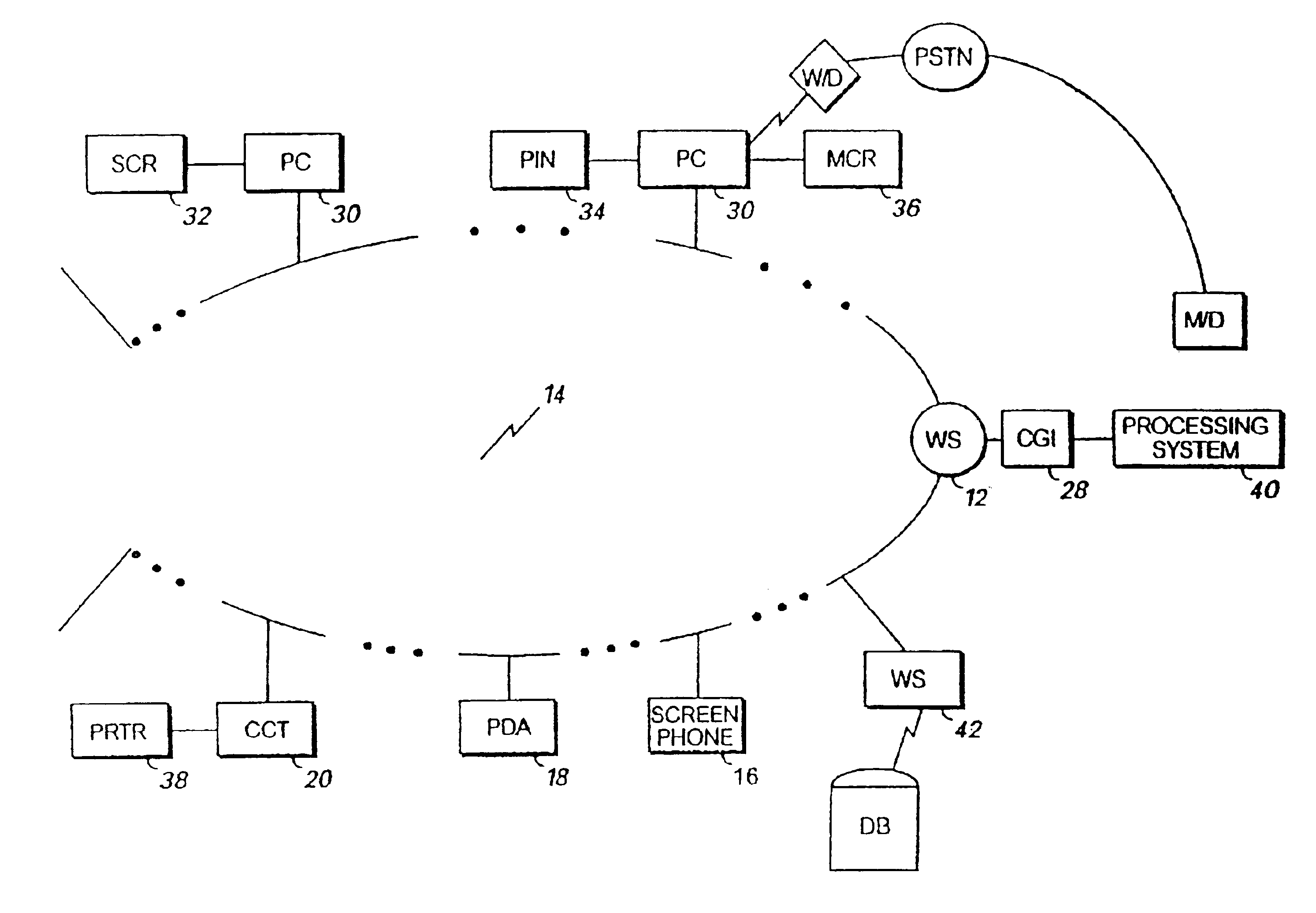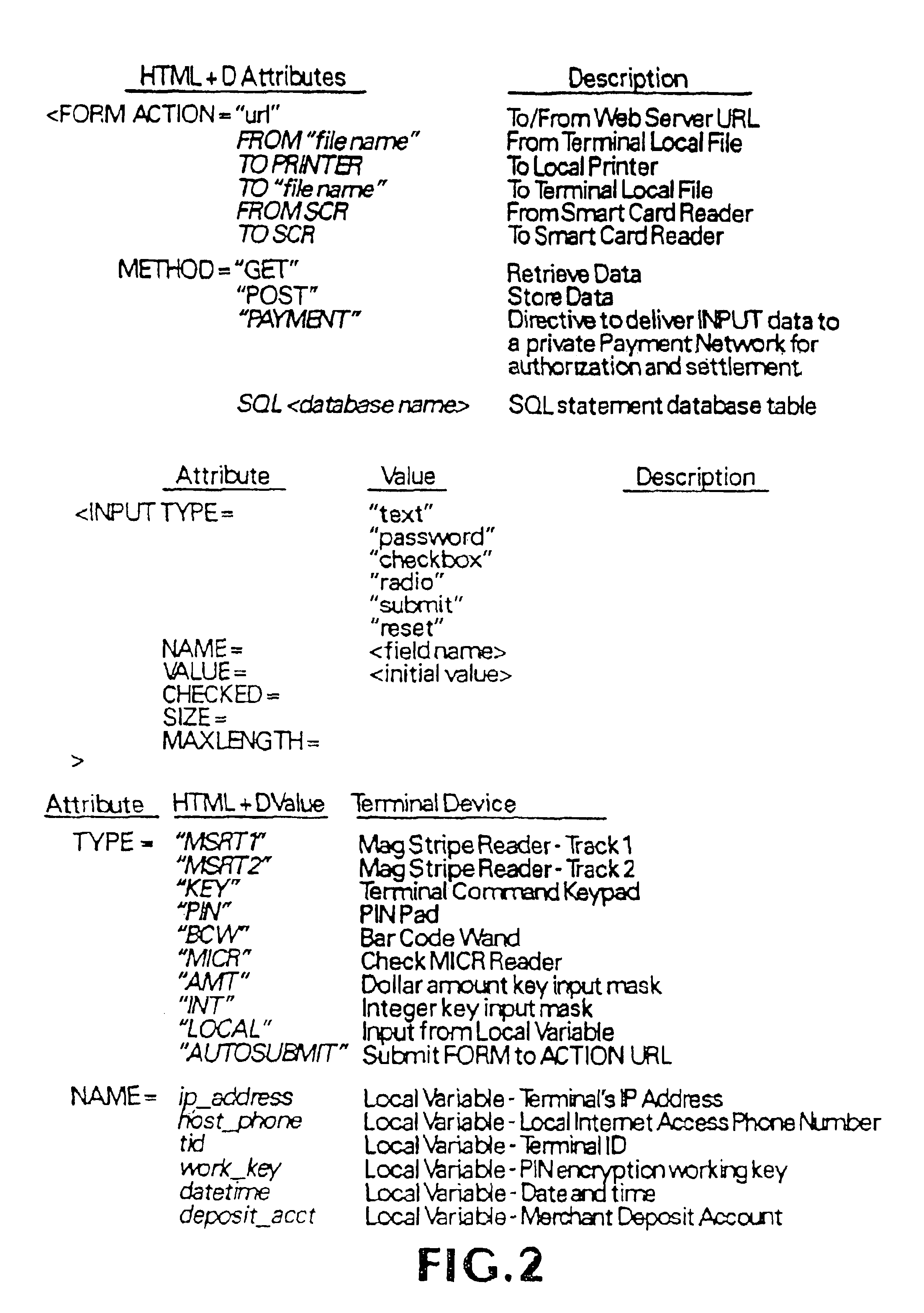Open network system and method for I/O operations with non-standard I/O devices using an extended open network protocol
a network protocol and open network technology, applied in the field of data transaction systems, can solve the problems of high communication cost per transaction, high physical security of dedicated data lines, consumers' reluctantness, etc., and achieve the effect of reducing the risk of fraud for the transaction, less susceptible, and improving the security of data transmission
- Summary
- Abstract
- Description
- Claims
- Application Information
AI Technical Summary
Benefits of technology
Problems solved by technology
Method used
Image
Examples
Embodiment Construction
[0054]A transaction or data system constructed in accordance with the principles of the present invention is shown is FIG. 1. The system 10 includes a Web server 12 which is coupled to an open network 14 such as the Internet for communication with various I / O devices and terminals. For example, the I / O devices which may be coupled directly to network 14 include standard I / O devices already supported by Internet protocols such as PCs 30 and non-standard I / O devices such as a screen phone terminal 16, a personal digital assistant (PDA) 18, and a credit card terminal 20. Other exemplary non-standard I / O devices such as smart card reader 32, personal identification number (PIN) pad 34, magnetic card swipe reader 36, printer 38, or the like, may be coupled to PCs through non-standard I / O ports such as COMM1 and COMM2 ports or to other non-standard I / O devices such as phone terminal 16, PDA 18, or credit card terminal 20. Typically, these devices are coupled to PCs or devices 16, 18, or 2...
PUM
 Login to View More
Login to View More Abstract
Description
Claims
Application Information
 Login to View More
Login to View More - R&D
- Intellectual Property
- Life Sciences
- Materials
- Tech Scout
- Unparalleled Data Quality
- Higher Quality Content
- 60% Fewer Hallucinations
Browse by: Latest US Patents, China's latest patents, Technical Efficacy Thesaurus, Application Domain, Technology Topic, Popular Technical Reports.
© 2025 PatSnap. All rights reserved.Legal|Privacy policy|Modern Slavery Act Transparency Statement|Sitemap|About US| Contact US: help@patsnap.com



